
- •Course of lectures «Contemporary Physics: Part1»
- •Figure 4.1. Two particles interact Newton’s third law, we must have F12
- •If a particle is moving in an arbitrary direction, p must have three
- •Using Newton’s second law of motion, we can relate the linear momentum of
- •Using the definition of momentum, Equation 4.1 can be written
- •The momentum of a particle changes if a net force acts on the
- •To evaluate the integral, we need to know how the force varies with
- •The direction of the impulse vector is the same as the direction of
- •Because the force imparting an impulse can generally vary in time, it is
- •We use the term collision to represent an event during which two particles
- •The total momentum of an isolated system just before a collision equals the
- •An inelastic collision is one in which the total kinetic energy of the
- •Figure 4.5 Schematic representation of an elastic head-on collision between two particles: (a)
- •Suppose that the masses and initial velocities of both particles are known.
- •The momentum of a system of two particles is conserved when the system
- •glancing collision
- •If the collision is elastic, we can also use Equation 4.16 (conservation of
- •Figure 4.7 Two particles of unequal mass are connected by a light, rigid
- •Assuming M remains constant for a system of particles, that is, no articles
- •If we now differentiate Equation 4.34 with respect to time, we obtain the
- •Rotation of a Rigid Object About a Fixed Axis
- •Rotation of a Rigid Object About a Fixed Axis
- •The average angular acceleration
- •Direction for angular speed and angular acceleration
- •Rotational Kinematics: Rotational Motion with Constant Angular Acceleration
- •is the angular position of the rigid object
- •If we eliminate t from Equations 5.6 and 5.7, we obtain
- •Table 5.1
- •Angular and Linear Quantities
- •We can relate the angular acceleration of the rotating rigid object to the
- •A point moving in a circular path undergoes a radial acceleration ar of
- •Rotational Kinetic Energy
- •We simplify this expression by defining the quantity in parentheses as the moment
- •Calculation of Moments of Inertia
- •Table 5.2
- •Torque
- •Figure 5.9 The force F1
- •Relationship Between Torque
- •Figure 5.11 A rigid object rotating about an axis through O.
- •Although each mass element of the rigid object may have a different linear
- •Work, Power, and Energy in Rotational Motion
- •The rate at which work is being done by F as theobject rotates
- •That is, the work–kinetic energy theorem for rotational motion states that
- •Table 5.3
- •Rolling Motion of a Rigid Object
- •Figure 5.14 All points on a rolling object move in a direction perpendicular
- •Figure 5.15 The motion of a rolling object can be modeled as a
- •Quiz
- •Quick Quiz 1 A block of mass m is projected across a horizontal
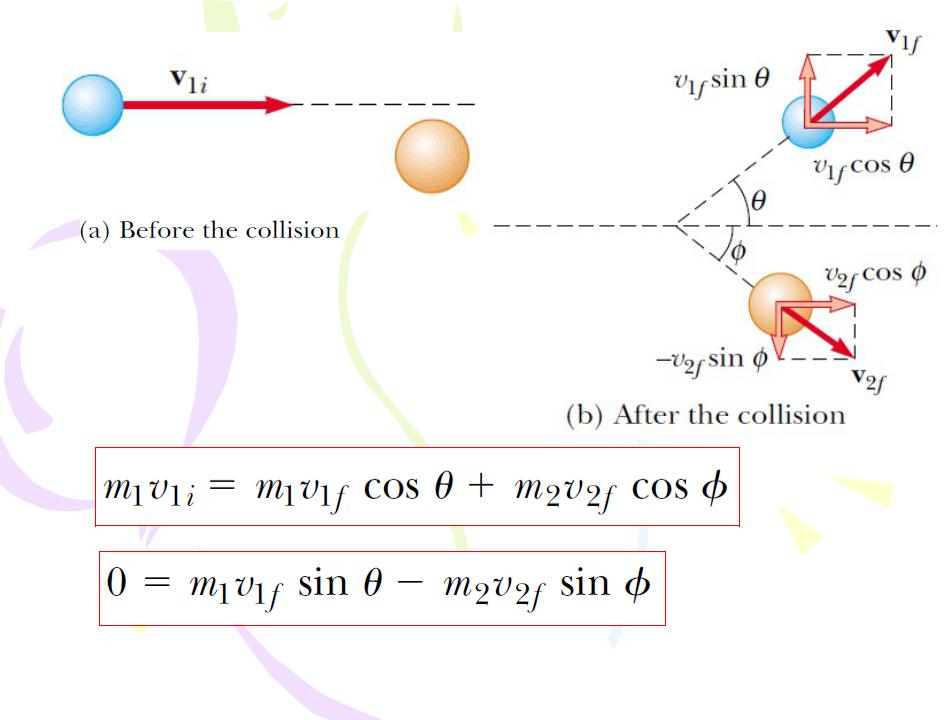
glancing collision 
Figure 4.6 An elastic glancing collision between two particles.
(4.24)
(4.25)
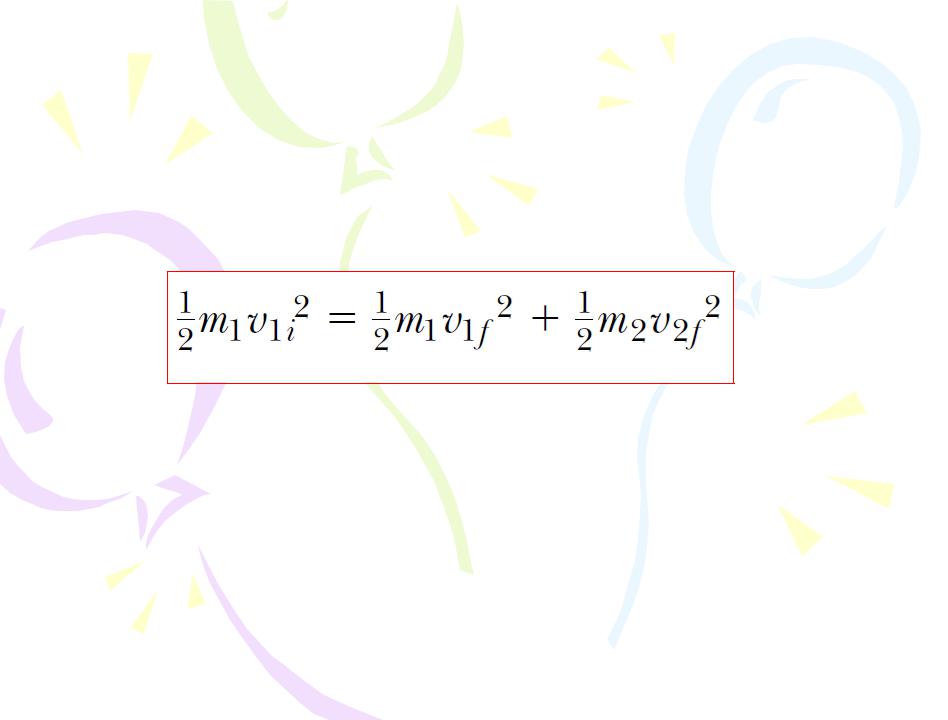
If the collision is elastic, we can also use Equation 4.16 (conservation of kinetic energy) with v2i = 0 to give 
(4.26)
If the collision is inelastic, kinetic energy is not conserved and Equation 4.26 does not apply.
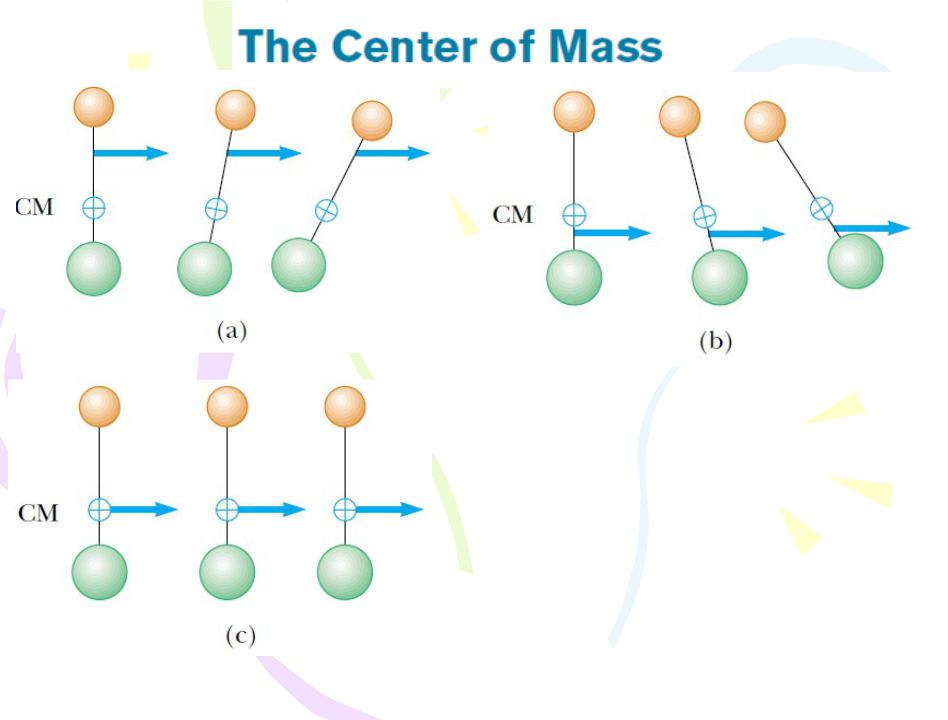
Figure 4.7 Two particles of unequal mass are connected by a light, rigid rod. (a) The system rotates clockwise when a force is applied between the less massive particle and the center of mass. (b) The system rotates counterclockwise when a force is applied between the more massive particle and the center of mass. (c) The system moves in the direction of the force without rotating when a force is applied at the center of mass.
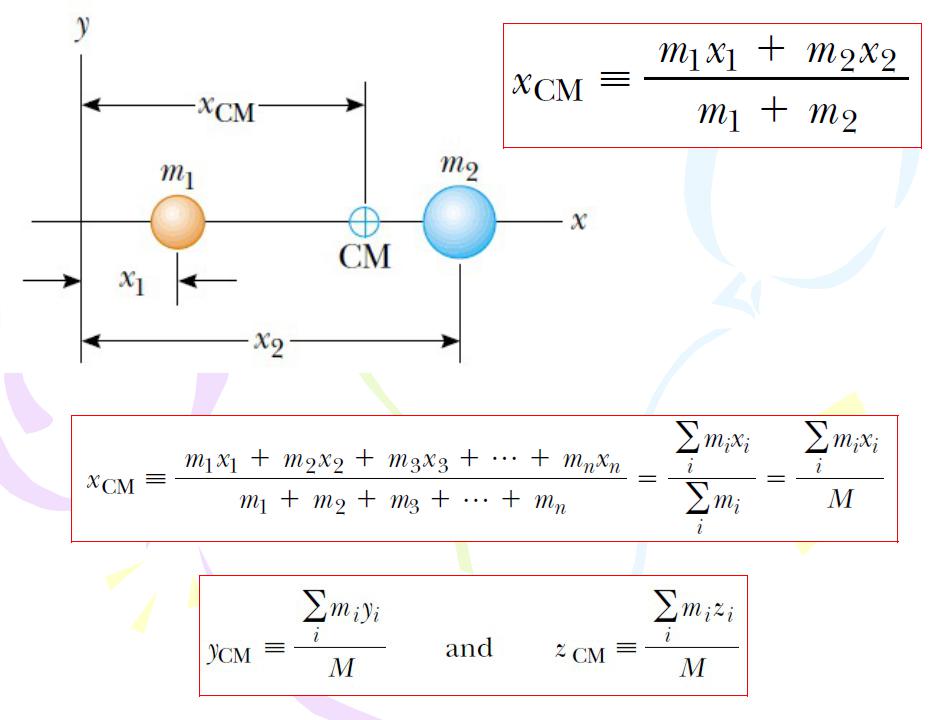
(4.27)
Figure 4.8 The center of mass of two particles of unequal mass on the x axis is located at xCM, a point between the
particles, closer to the one having the larger mass.
(4.28)
(4.29)
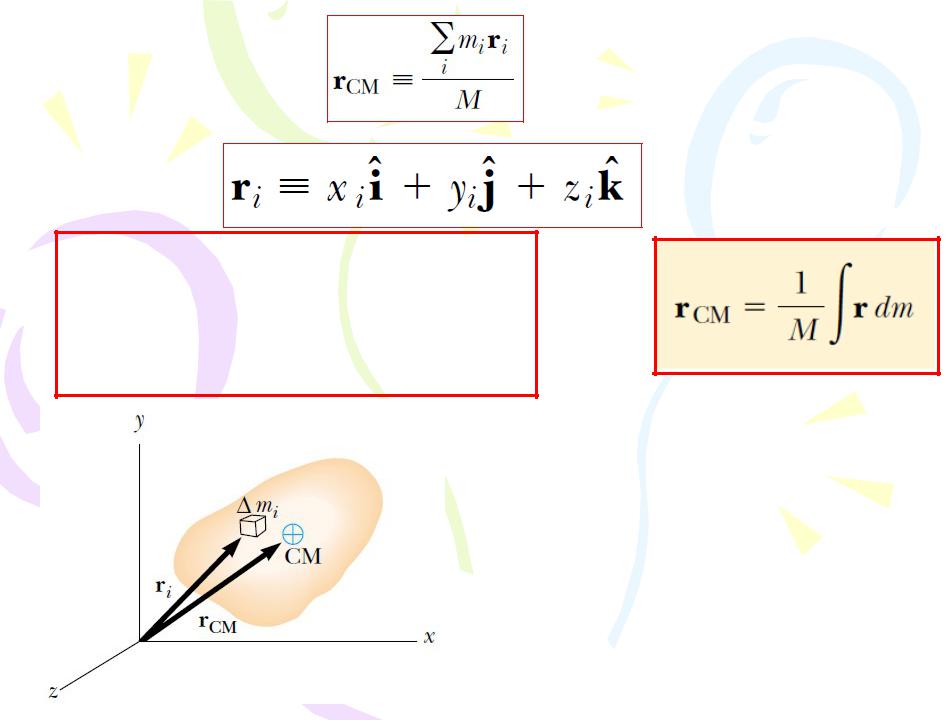
 (4.30)
(4.30)
The center of mass of any symmetric object lies on an axis of symmetry and on any plane of symmetry.
Figure 4.9 An extended object can be considered to be a distribution of small elements of mass ∆mi. The
center of mass is located at the vector position rCM, which has
a continuous mass distribution |
coordinates xCM, yCM, and zCM. |
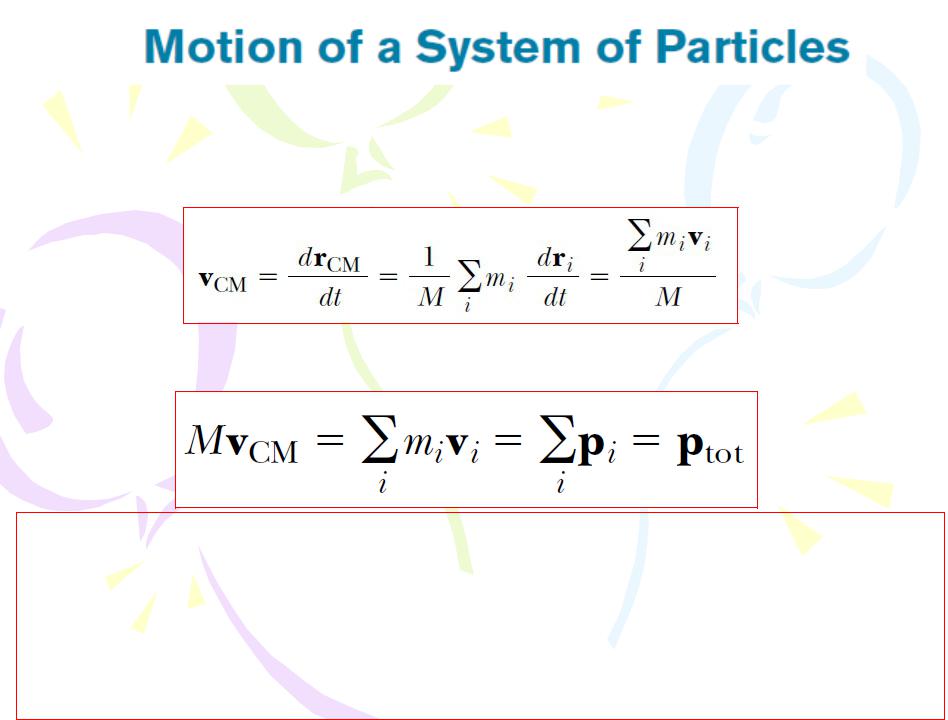
Assuming M remains constant for a system of particles, that is, no articles enter or leave the system, we obtain the following expression for the velocity of the center of mass of the system:
(4.34)
where vi is the velocity of the ith particle. Rearranging Equation 4.34
gives
(4.35)
Therefore, we conclude that the total linear momentum of the system equals the total mass multiplied by the velocity of the center of mass. In other words, the total linear momentum of the system is equal to that of a single particle of mass M moving with a velocity vCM.
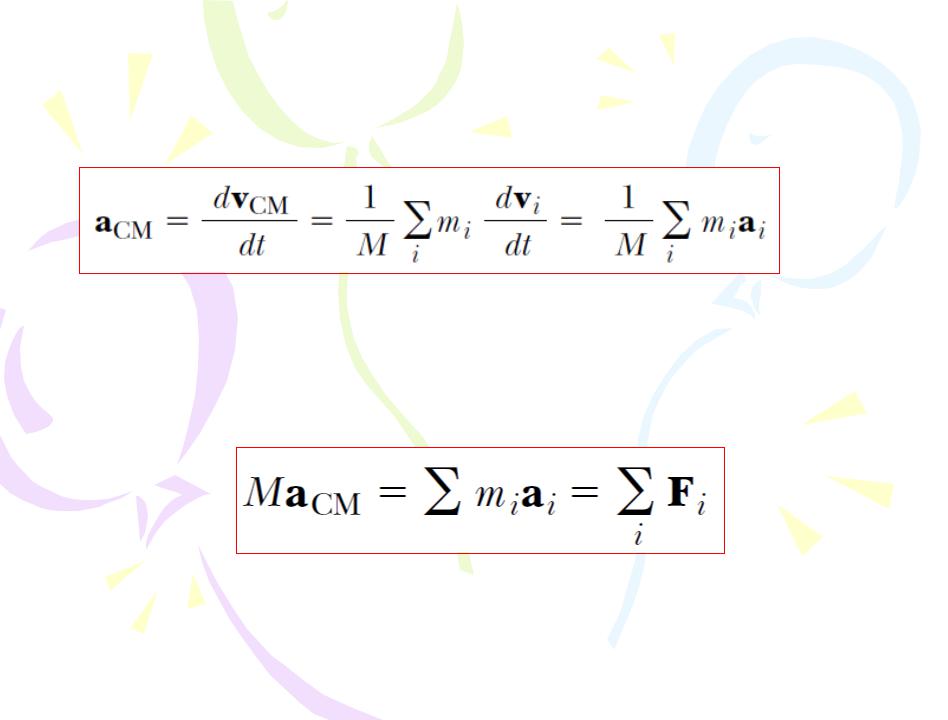
If we now differentiate Equation 4.34 with respect to time, we obtain the acceleration of the center of mass of the system: 
(4.36)
Rearranging this expression and using Newton’s second law, we obtain
(4.37)
where Fi is the net force on particle i.
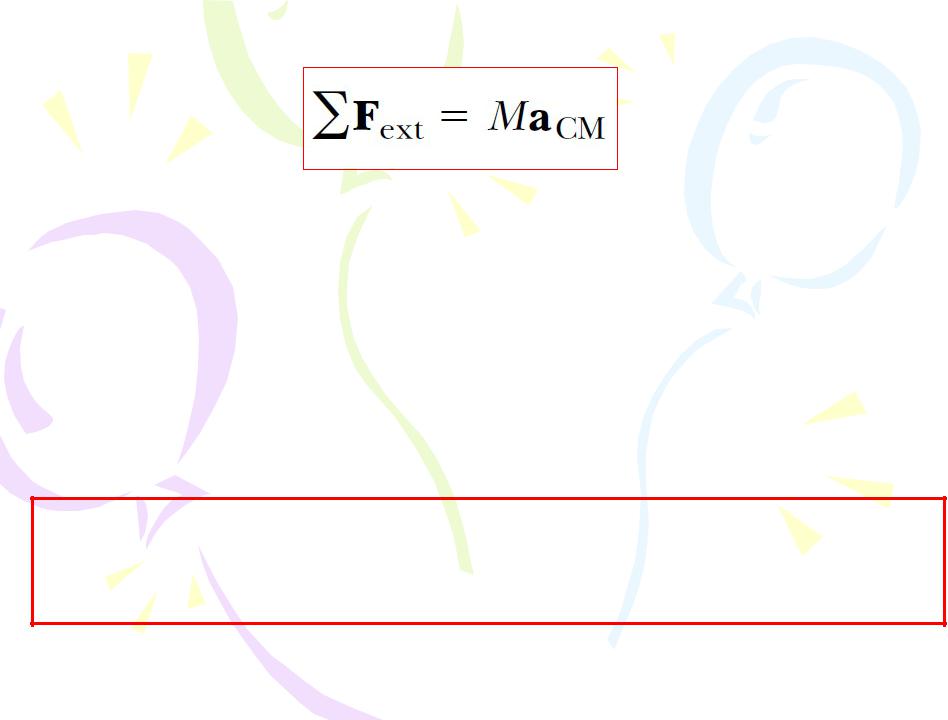
(4.38)
That is, the net external force on a system of particles equals the total mass of the system multiplied by the acceleration of the center of mass. If we compare this with Newton’s second law for a single particle, we see that the particle model that we have used for several chapters can be described in terms of the center of mass:
The center of mass of a system of particles of combined mass M moves like an equivalent particle of mass M would move under the influence of the net external force on the system.
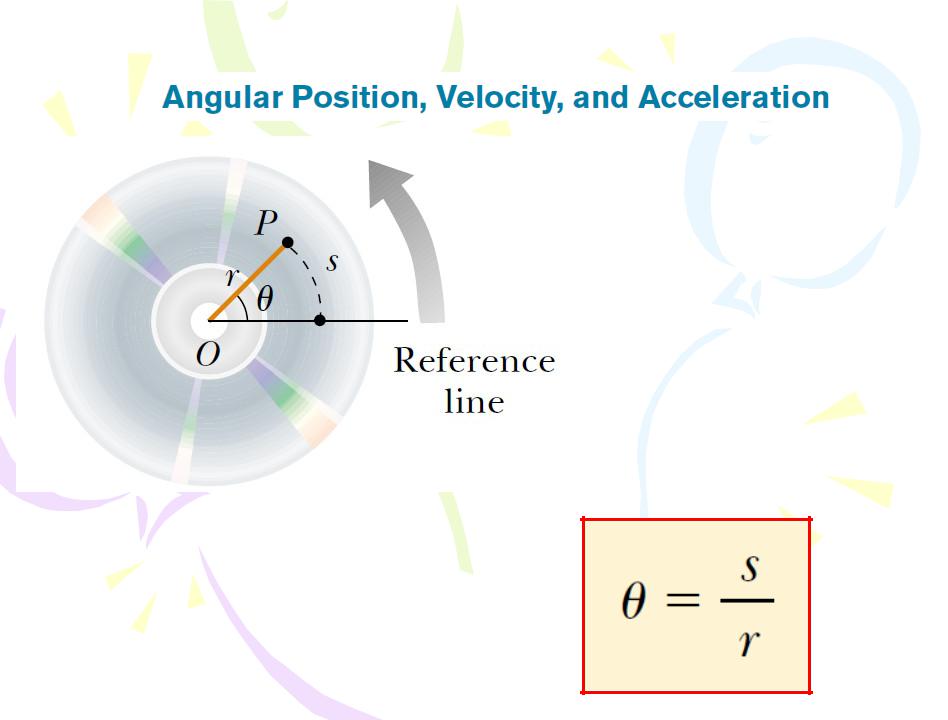
Rotation of a Rigid Object About a Fixed Axis
Figure 5.1 A compact disc rotating about a fixed axis through O perpendicular to the plane of the figure.
The angular position of the rigid object is the angle θ between this reference line on the object and the fixed reference line in space, which is often chosen as the x axis.
(5.1)
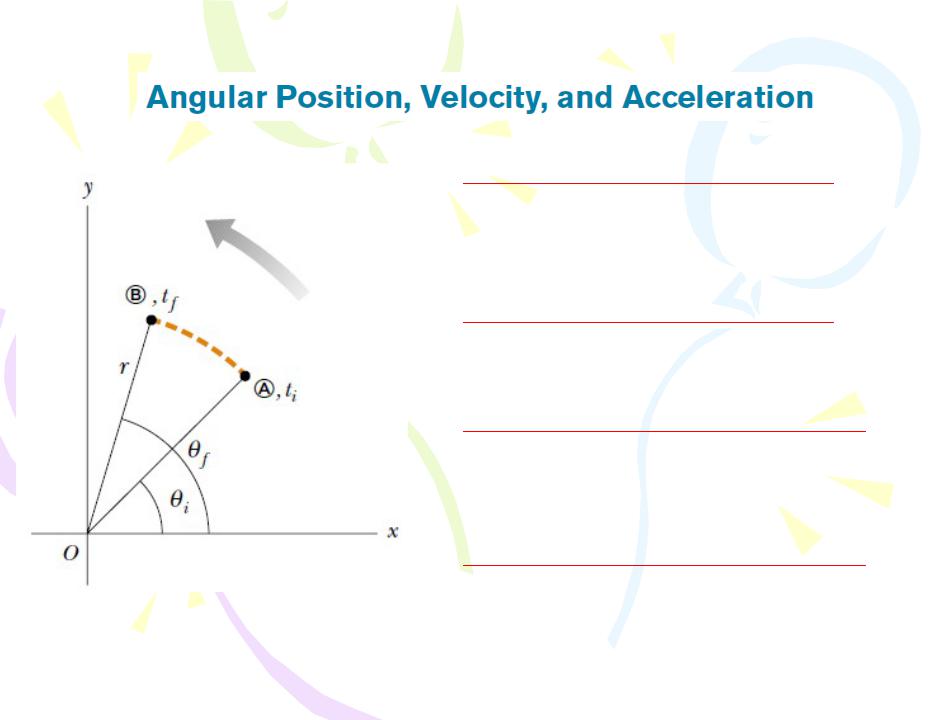
Rotation of a Rigid Object About a Fixed Axis
The average angular speed


 (5.2)
(5.2)
The instantaneous angular speed


 (5.3)
(5.3)
Figure 5.2 A particle on a rotating rigid object moves from A to B along the arc of a circle. In the time interval ∆t = tf - ti , the radius vector moves
through an angular displacement ∆θ = θf - θi.
